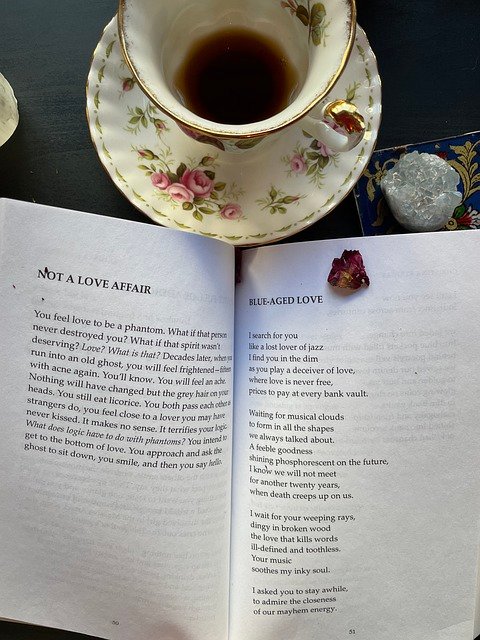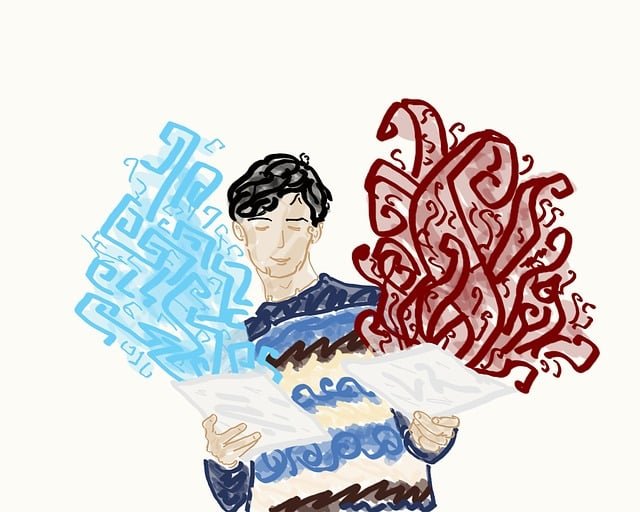A lyric poem is a poetry form where the poet expresses his intense emotions and thoughts with his creative imagination. These poems are famous for their musicality and ability to invoke strong feelings in the reader’s mind. Descriptive poem, on the other hand, do not deal with human emotions but instead focus on painting imagery with words. Here, the poet describes a particular scenic view, memory, incident, or person throughout the poem.
Before we get into the differences between Lyric and Descriptive Poems, let us understand both these poetic forms in detail.
Lyric poem
In Lyric poems, poets explore a variety of themes and subjects, be it human relationships, experiences, love for nature, etc. Poets use poetic devices like metaphors, alliteration, imagery, etc, to create a deeper emotional impact on the readers. This poetic form uses memorable and evocative language to capture the intensity of the poet’s feelings and thoughts.
Examples
- The Heart asks Pleasure first by Emily Dickson
In this poem, the poet explores the theme of the wants and desires of the heart, which is a common theme in most lyrical poetry. She tells her readers that the Heart constantly desires pleasure. But if the heart does not get it, it will settle for being excused from pain and to live a life without suffering.
The Heart asks Pleasure – First –
And then – Excuse from Pain –
And then – those little Anodynes
That deaden suffering –
And then – to go to sleep –
And then – if it should be
The will of its Inquisitor
The liberty to die –
- Whoso list to hunt by Sir Thomas Hyatt
In this sonnet, the poet expresses his feelings and thoughts on death, love and life. It is possibly a coded reference to his relationship with Anne Boleyn.
Who so list to hunt, I know where is a hind,
But as for me, hélas, I may no more.
The vain travail hath wearied me so sore,
I am of them that farthest cometh behind.
Yet may I by no means my wearied mind
Draw from the deer, but as she fleeth afore
Fainting I follow. I leave off therefore,
Since in a net I seek to hold the wind.
Who list her hunt, I put him out of doubt,
As well as I may spend his time in vain.
And graven with diamonds in letters plain
There is written, her fair neck round about:
Noli me tangere, for Caesar’s I am,
And wild for to hold, though I seem tame.
Descriptive poem
Descriptive poems also deal with emotions, but not in abstract form, but towards a specific person, scenery, object, etc. Here the poet explores the sensory experience of a moment by giving it’s vivid description to its readers. He gives a detailed observation of the sounds, smells, and images surrounding the poem’s subject to create a powerful mental image.
Examples
- I wandered lonely as a cloud by William Wordsworth
In this poem, the poet describes the imagery of a person moving along the hills and daffodils swaying in the breeze. He draws intense comparisons to depict how moved he is by the beauty of nature.
I wandered lonely as a cloud
That floats on high o’er vales and hills,
When all at once I saw a crowd,
A host, of golden daffodils;
Beside the lake, beneath the trees,
Fluttering and dancing in the breeze.
Continuous as the stars that shine
And twinkle on the Milky Way,
They stretched in never-ending line
Along the margin of a bay:
Ten thousand saw I at a glance,
Tossing their heads in sprightly dance.
The waves beside them danced; but they
Out-did the sparkling waves in glee:
A poet could not but be gay,
In such a jocund company:
I gazed—and gazed—but little thought
What wealth the show to me had brought:
For oft, when on my couch I lie
In vacant or in a pensive mood,
They flash upon that inward eye
Which is the bliss of solitude;
And then my heart with pleasure fills,
And dances with the daffodils.
- Out, Out by Robert Frost
In this poem, the poet describes a horrifying incident of a young boy meeting a terrible accident. The boy in this poem severs his hand with a buzzsaw and passes away.
The buzz saw snarled and rattled in the yard
And made dust and dropped stove-length sticks of wood,
Sweet-scented stuff when the breeze drew across it.
And from there those that lifted eyes could count
Five mountain ranges one behind the other
Under the sunset far into Vermont.
And the saw snarled and rattled, snarled and rattled,
As it ran light, or had to bear a load.
And nothing happened: day was all but done.
Call it a day, I wish they might have said
To please the boy by giving him the half hour
That a boy counts so much when saved from work.
His sister stood beside him in her apron
To tell them ‘Supper.’ At the word, the saw,
As if to prove saws knew what supper meant,
Leaped out at the boy’s hand, or seemed to leap—
He must have given the hand. However it was,
Neither refused the meeting. But the hand!
The boy’s first outcry was a rueful laugh,
As he swung toward them holding up the hand
Half in appeal, but half as if to keep
The life from spilling. Then the boy saw all—
Since he was old enough to know, big boy
Doing a man’s work, though a child at heart—
He saw all spoiled. ‘Don’t let him cut my hand off—
The doctor, when he comes. Don’t let him, sister!’
So. But the hand was gone already.
The doctor put him in the dark of ether.
He lay and puffed his lips out with his breath.
And then—the watcher at his pulse took fright.
No one believed. They listened at his heart.
Little—less—nothing!—and that ended it.
No more to build on there. And they, since they
Were not the one dead, turned to their affairs.
Now that you have understood the concepts of lyric and descriptive poems, let us get into their differences.
Lyric poem v/s Descriptive poem
- Subject: Lyric poetry emphasizes the poet’s emotions, thoughts and feelings. Descriptive poems focus on detailed descriptions of places, objects, people or events.
- Objective: The poet intends to express his inner reflections or experiences through medium of a lyric poem. In a descriptive poem, the poet intends to paint a vivid image in the reader’s mind through sensory imagery.
- Form: A lyric poem is shorter in length, and takes the form of a musical rhythm or song. Descriptive poetry varies in length or form and employs rich vocabulary and detailed language.
Both lyrical and descriptive poems are popular poetic forms that have been in existence for ages. Poets have been using them for decades to express their thoughts to the reader. Both these forms are similar and different in their ways. Understanding these similarities and differences will help you gain clarity in your understanding of these poetic forms.
Featured Image Credits: chrissy68 from Pixabay










